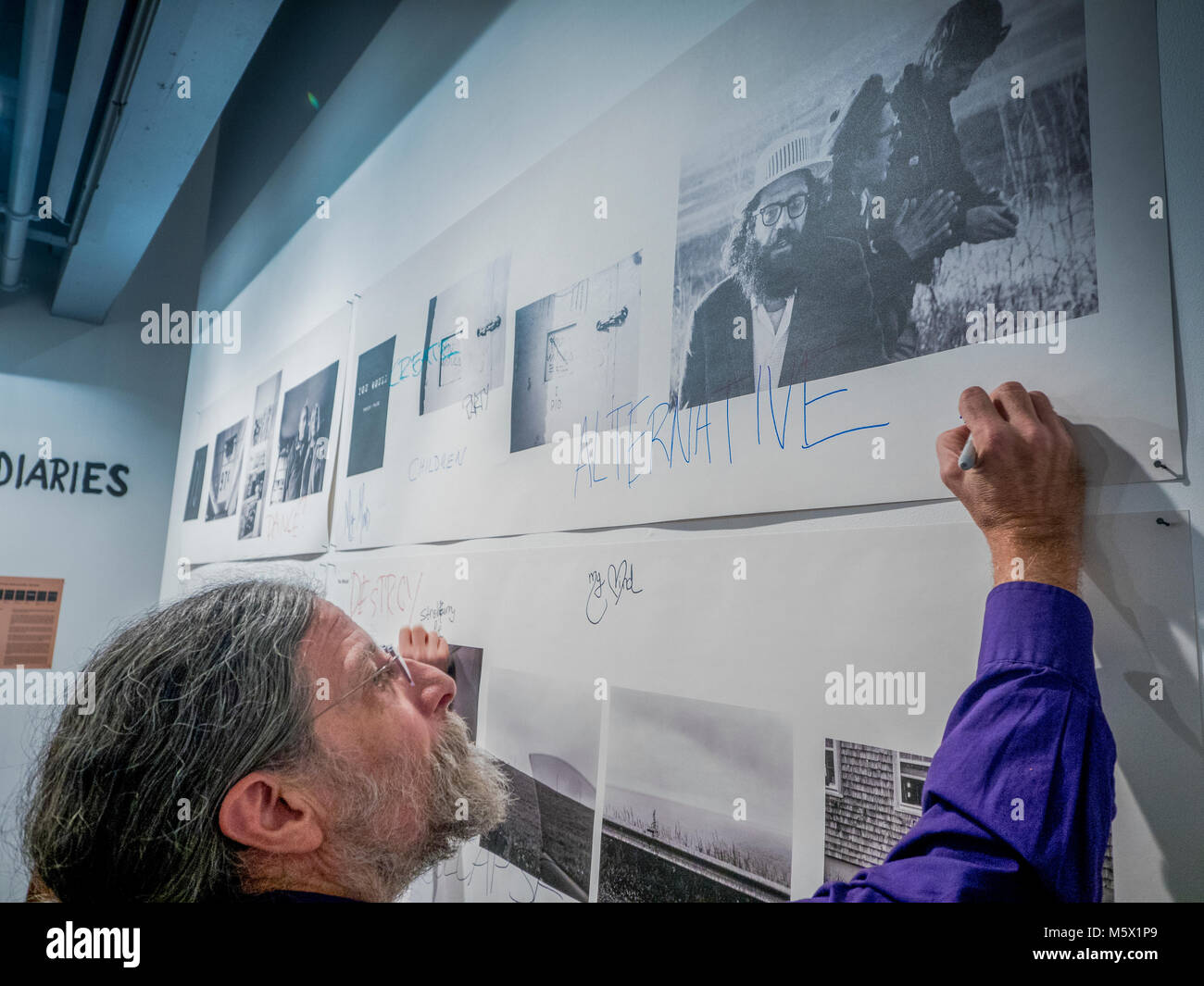Portland, Oregon, USA. 26 FEB, 2018. Blue Sky Gallery co-founder Christopher Rauschenberg, son of the American painter Robert Rauschenberg, defaces a Robert Frank image of the poet Alan Ginsberg at Blue Sky Gallery in Portland, Oregon, USA. The work was destroyed in a “Destruction Dance” performance defacing the photographs with ink and mutilation with scissors, knives and even ice skates at the end of it’s run. The destruction was Frank's protest regarding today's greed in the global art market. Credit: Ken Hawkins/Alamy Live News

Image details
Contributor:
Ken Hawkins / Alamy Stock PhotoImage ID:
M5X1P9File size:
45.6 MB (2.5 MB Compressed download)Releases:
Model - no | Property - noDo I need a release?Dimensions:
4608 x 3456 px | 39 x 29.3 cm | 15.4 x 11.5 inches | 300dpiDate taken:
25 February 2018Location:
Blue Sky Photography Gallery, Northwest 8th Avenue, Portland, OR, USAMore information:
This image could have imperfections as it’s either historical or reportage.
With the aid of his major artistic influence, the photographer Walker Evans, Frank secured a Guggenheim Fellowship from the John Simon Guggenheim Memorial Foundation[ in 1955 to travel across the United States and photograph all strata of its society. Cities he visited included Detroit and Dearborn, Michigan; Savannah, Georgia; Miami Beach and St. Petersburg, Florida; New Orleans, Louisiana; Houston, Texas; Los Angeles, California; Reno, Nevada; Salt Lake City, Utah; Butte, Montana; and Chicago, Illinois. He took his family along with him for part of his series of road trips over the next two years, during which time he took 28, 000 shots. 83 of these were selected by him for publication in The Americans. Frank's journey was not without incident. He later recalled the anti-Semitism to which he was subject in a small Arkansas town. “I remember the guy [policeman] took me into the police station, and he sat there and put his feet on the table. It came out that I was Jewish because I had a letter from the Guggenheim Foundation. They really were primitive.” He was told by the sheriff, “Well, we have to get somebody who speaks Yiddish." ... "They wanted to make a thing out of it. It was the only time it happened on the trip. They put me in jail. It was scary. Nobody knew where I was.” Elsewhere in the South, he was told by a sheriff that he had "an hour to leave town." Shortly after returning to New York in 1957, Frank met Beat writer Jack Kerouac on the sidewalk outside a party and showed him the photographs from his travels. Kerouac immediately told Frank, "Sure I can write something about these pictures." He eventually contributed the introduction to the U.S. edition of The Americans. Frank also became lifelong friends with Allen Ginsberg, and was one of the main visual artists to document the Beat subculture, which felt an affinity with Frank's interest in documenting the tensions between the optimism of the 1950s and the realities of class and racial differences.